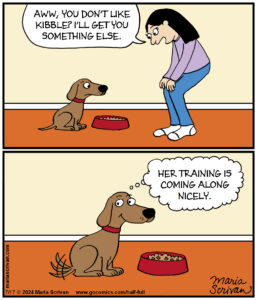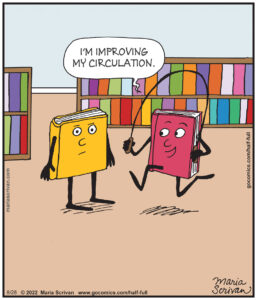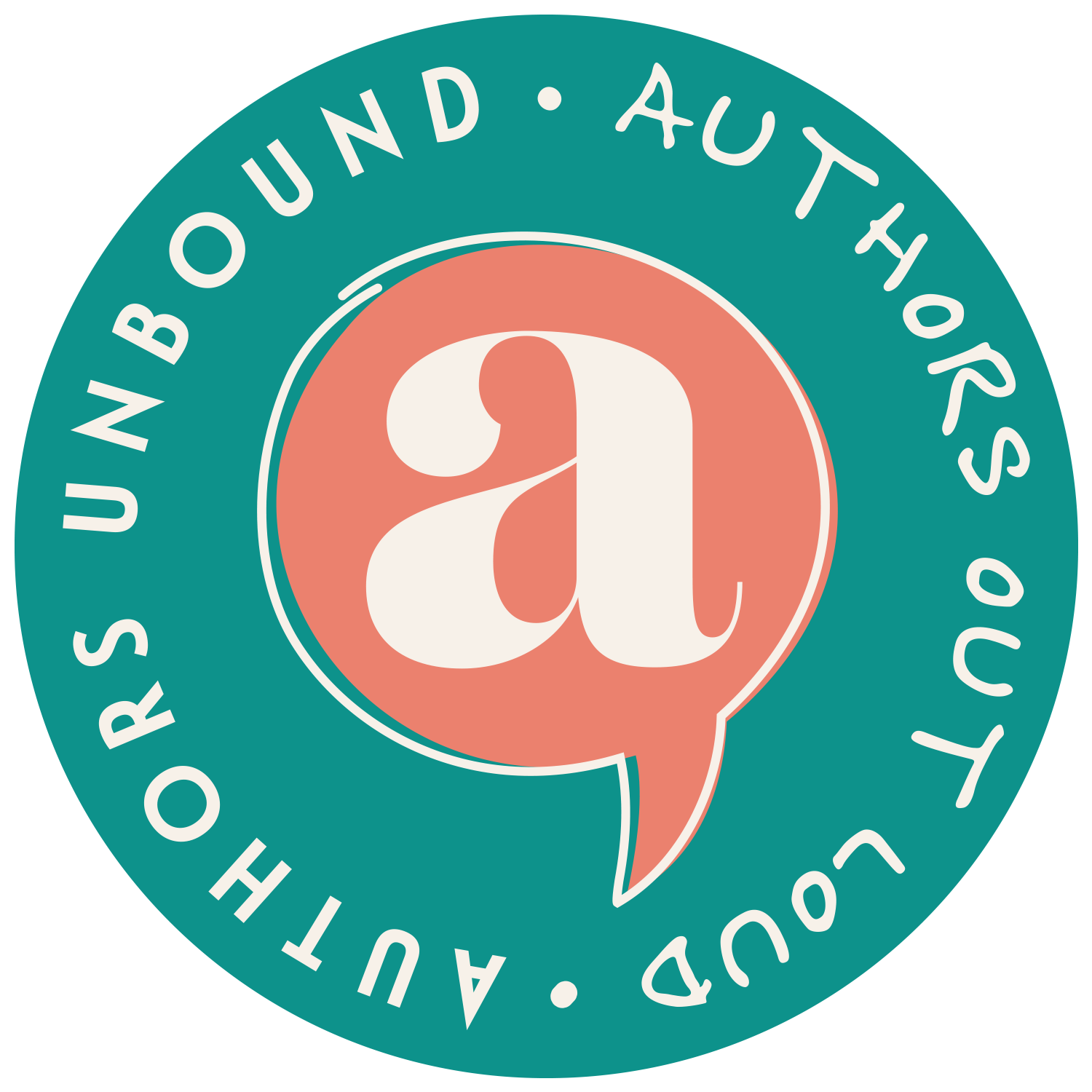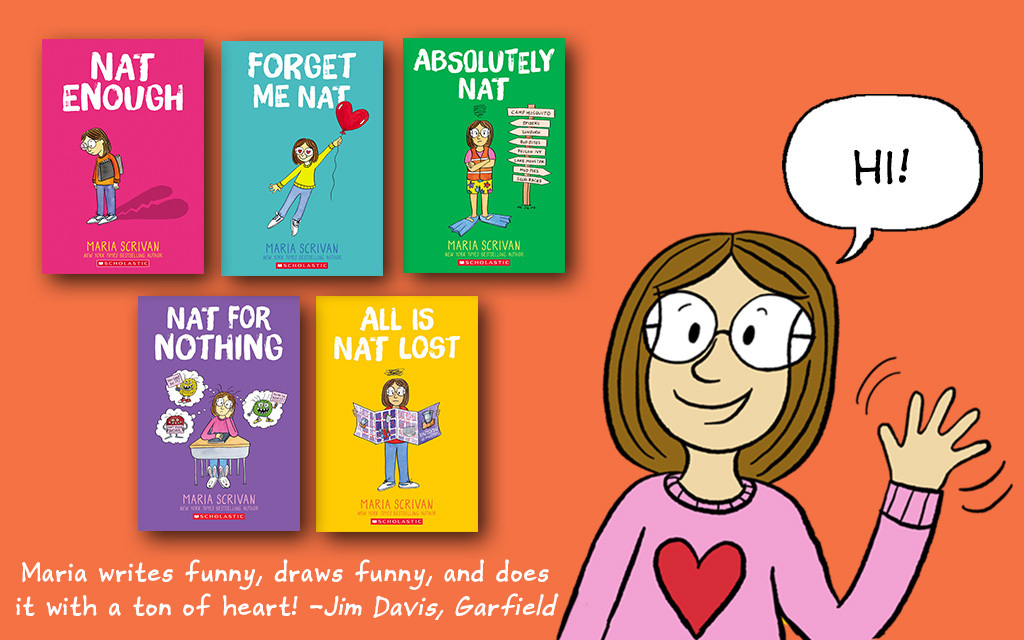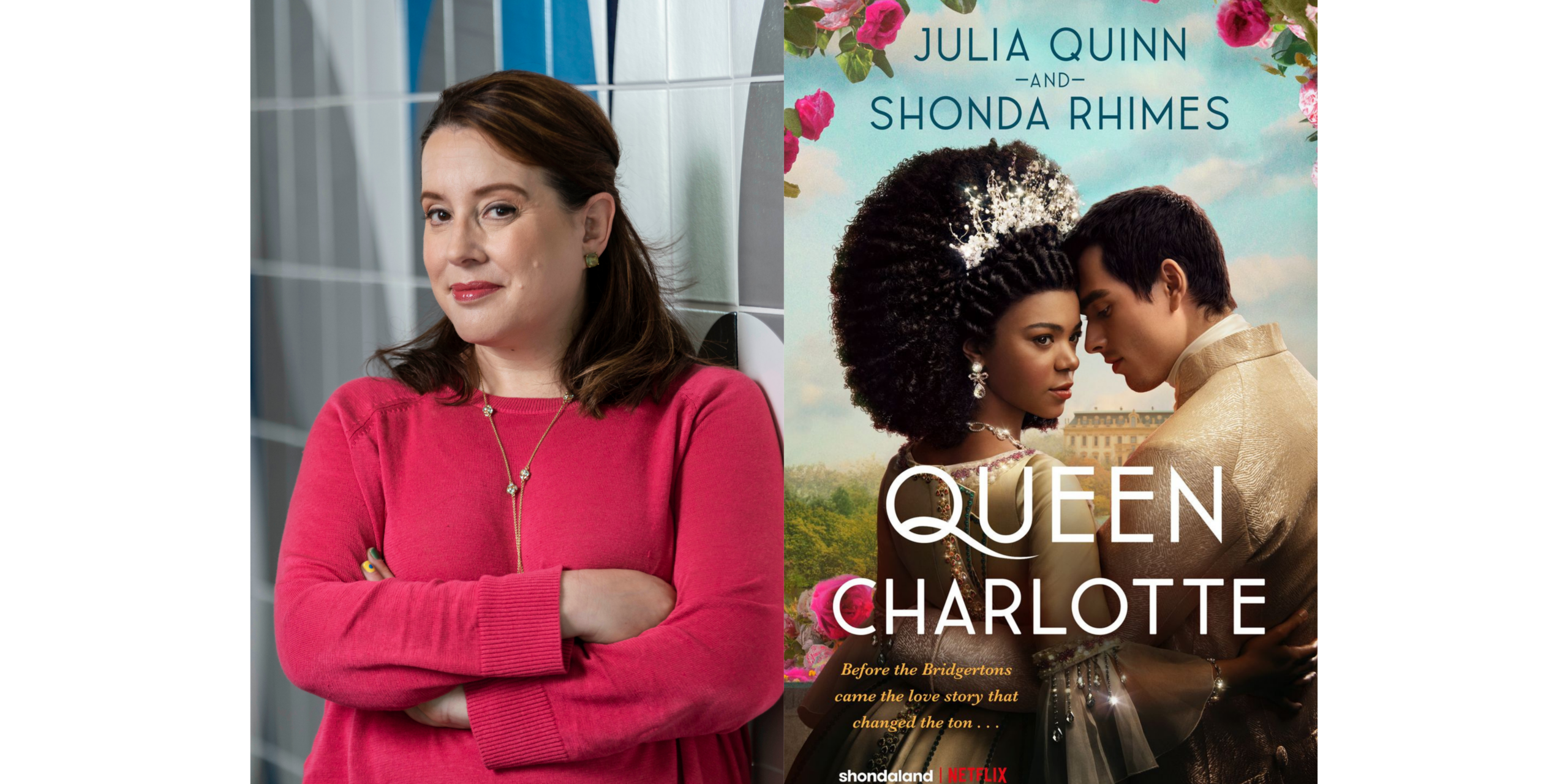An Interview With Maria Scrivan On Illustration, Cartoons, and Nat

Maria Scrivan is a New York Times bestselling author and award-winning syndicated cartoonist. The first book in her graphic novel series, Nat Enough (Scholastic/Graphix), launched on April 7th, 2020, became an instant New York Times bestseller. It was followed by: Forget Me Nat, Absolutely Nat, Definitely Nat, and Nat for Nothing, and All is Nat Lost. The sixth book in the series, Nat a Chance, will be released in March of 2025. She is also a contributor to Marvel’s Super Stories which was released in October of 2023.
Maria’s comic, Half Full, is syndicated by Andrews McMeel and available on GoComics.com/half-full. It appeared daily in newspapers nationwide including the LA Times for the last ten years. Her cartoons have appeared in many publications including MAD Magazine, Highlights, American Bystander, Prospect Magazine, Parade Magazine, and Wired. She also licenses her work for hundreds of greeting cards.
You write and illustrate all of your books! I’m so impressed. So I guess that begs the questions, what came first? Natalie the story or Natalie the illustration?
In the first book in the series, Nat Enough, Natalie started out as a series of funny stories from my childhood. The more I leaned into the humor of the book, I realized that it had to be a graphic novel. Although Natalie was based on my childhood self, her character took on a life of its own, and I’ve learned so much from her! So many of the stories in the six book series are based on real feelings and experiences from my childhood, with evergreen themes like fitting it, being true to yourself, and realizing that you are more than enough, just as you are.
How does your artistic process work? Do you prefer to illustrate as you go or finish a story and then come back and add images?
I’ve always been a visual learner, and a visual communicator, and love to work with words and images together. I start out by doodling the characters and imagine what they might say and do, and figure out what the story will be. Sometimes I only have the beginning of the story, or the ending to start. It’s so exciting to watch the story unfold! Once I have an idea of what the story will be, I write a detailed outline and use it like a road map—I know where I’m headed but I let the story be the guide, showing me surprises along the way. The next step is to thumbnail out the entire book in rough drawings, figuring out the dialogue, setting, and humor as I go. I am constantly refining the story, and after many revisions with my editors, I then go to tight pencils, inks and finally to colors. There is a constant process of revision throughout each step, and I often will draw the same page over and over until I get it just right. This same process goes for the cover drawing. I start out with a series of rough sketches and after many revisions with my editors, we decide on a cover design. I share all of this process in my presentation, and I truly love each step in the adventure of creating a graphic novel.
What materials do you use for your illustrations? I imagine a lot of it is digital these days, but that can’t have always been your medium?
Depending on the project, I either draw traditionally by hand, using pencil, a fountain pen, and watercolor, or digitally using Procreate on my iPad Pro, and color using Photoshop. I always start with pencil on paper, and I always tell students that a pencil and paper are all they need to make comics. Even if you end up working digitally, it is so important to know how to draw on paper first. There is a magic that happens between your brain and a pencil that informs so much of the creative process.
Do you find that illustrating helps you convey emotions and tell parts of the story?
What I love about graphic novels is how many layers of depth you can add to the story through illustration. You can see the nuances of the main character’s expression, as well as everyone else in the scene. You can convey emotion through body language, color, props, clothing, weather—the options are limitless! Illustration also gives me so many opportunities to amplify the humor of a scene, and add Easter eggs throughout the story, which makes it fun to read the books over and over again.
Social-emotional learning is a vital part of growing up. How do you guide a conversation around emotions?
The books in the Nat Enough series organically contain so many themes from social emotional learning including self-worth, self-love, doubt, fear, independence, and self-belief. I share many of my own personal stories and experiences on my path to being a cartoonist, sharing how many times I have experienced rejection but I never gave up. I also talk about the doubt gremlins that Natalie faces in Nat for Nothing, and strategies on how to move through feelings of self-doubt and imposter syndrome. In sharing the relatable situations from the Nat stories in my talks students are inspired and energized to follow their dreams with a growth mindset, using persistence, resilience, and dedication.
What are some of the best questions you’ve received from students?
My favorite part of author visits is the question and answer session, along with drawing for the students. I am often asked which is my favorite book in the series, how it feels to be a New York Times bestselling author, and how long it takes to write and draw a graphic novel. Some of my favorite questions are from students who love to write and draw and want to know all about the process from taking an idea and turning it into a fully formed comic or book. One of my favorite questions is how I got the idea for Nat, which gives me the opportunity to share that inspiration is all around us, especially in our own lives. I love the Carl Rogers quote, “What is most personal is most universal.” I find that my most personal stories both in my books and my comics are often the ones that resonate the most. When we share our stories, we heal ourselves, and when we heal ourselves we heal each other. We all have stories to tell, and I always encourage students to share their stories too.
How do you incorporate art and illustration into your talks and presentations?
My entire presentation is filled with vibrant art and images. I share photographs from my childhood that inspired stories from the Nat Enough series, as well as my student work from when I drew comics as assignments in school and when I was a cartoonist for my middle grade yearbook, along with the evolution of how my work looks today. I share process images from very rough drawing through finished art, and emphasize how much my drawing style has changed and evolved with practice. I also share funny comics and scenes from the Nat books.
What’s next for Nat? Do you have other stories brewing?
The sixth book in the Nat Enough series, Nat a Chance, will be available in March, 2025. In Nat a Chance, Nat doesn’t think she’s an athlete. She is always picked last for gym, and constantly falling on her face. After a series of embarrassing moments, she signs up for a triathlon with her best friend, Zoe, and is pushed far out of her comfort zone. The book is about the stories we tell ourselves about our perceived limitations, and what happens when we challenge those false beliefs.
Aside from Nat (we love her dearly), you have had a really successful and fun career as a cartoonist! I’m curious how you maintain the inspiration when running a
daily column?
My daily comic Half Full ran in newspapers nationwide, including the LA Times, for adecade. I have recently retired it from newspapers but continue to publish it online Monday, Wednesday, and Friday on http://www.gocomics.com/half-full. The best part about having a daily comic is looking at life through the lens of humor, and finding something funny in even the most trying situations. A lot of my work is observational humor, and since things are constantly changing in our daily lives, there is no end to the material! I also love drawing comics about my dog, and spend a lot of time imagining what my dog might say if he could talk.
Do you have any particular comics that you were particularly proud or fond of? We’d love to see them.
The comic with the dog training their owner to put better food in their bowl is based on a true story. I am very grateful and lucky that my parents take care of my dog when I travel. They completely spoil him and after a few days of visiting them, he’ll come home and stare at his food bowl, waiting for something better. He’s gotten very good at training all of us! One of my other favorite comics is the one of the dachshund growth chart, which is also based on a true story. My dog, Toby, was a tiny three-pound puppy, and seemed to just keep getting longer instead of taller. Lastly, a little library humor, about a book improving their circulation by jumping rope.

